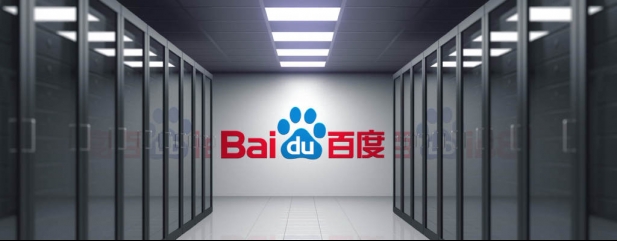Archived article
Please note that tax, investment, pension and ISA rules can change and the information and any views contained in this article may now be inaccurate.
The big winners from the AI revolution

Artificial intelligence or AI has both the ability to revolutionise business models and to create significant returns for shareholders who invest in the right AI plays.
The increasing availability of data sets coupled with the collapse in computing costs means that AI is now coming of age.
The breadth of tasks to which AI technologies can be applied is rapidly expanding. The companies that create leading proprietary data sets and AI tools around them will benefit.
AI has the potential to become the disruptive technology over the next 20 years.
In this article we will examine the trend and ways to take advantage of it.

THE DEMOCRATISATION OF AI
Training AI (data is used to train an algorithm or machine learning model to predict the outcome you design) is extremely computer intensive.
However, the emergence of the public cloud, dedicated AI chips and silicon specifically designed for such tasks have democratised the ability to run AI outside the large international companies.
The emergence of big data (extremely large data sets that can be analysed by computers to reveal patterns and trends) has played a critical role in facilitating the adoption of AI tools, given the significant amount of data required to train AI.
The proliferation of structured data which is ordered and can be analysed has also acted as a catalyst for the adoption and training of AI.
Structured data constitutes at best, 20% of available data. One of the reasons AI is so powerful as a tool is its ability to analyse unstructured data (data which has not been tagged or structured). This was nearly impossible to do so previously.

INTERPLAY BETWEEN MOORE’S LAW AND WRIGHT’S LAW
Recent analysis undertaken by Morgan Stanley has highlighted how disruptive innovation has been accentuated by the interplay between Moore’s Law and Wright’s Law.
The former maintains that the number of transistors on a circuit board doubles every two years.
The latter states that for every cumulative doubling of units produced, costs will fall by a constant percentage. It is only recently that the combination of cheap and democratised computing power had enabled the global adoption of machine learning tools.
Artificial intelligence and cheap computing power are the backbone of many of the disruptive technologies taking place within robotics, autonomous vehicles and medical diagnostics. Previously large and unstructured data pools had finite uses.
THE DEMOCRATISATION OF COMPUTING POWER
The increasing importance of AI technologies has prompted firms including Google, Amazon and Microsoft to design chips that run their own deep learning tools (a subfield of machine learning, supporting algorithms that are inspired by the structure and function of the human brain, and called artificial neural networks).
And lots of competitors are creating increasingly powerful chips for cloud applications.
Cloud technology has enabled these interactions in computing and data analytics to be leveraged across a multitude of industries including the field of genomic testing that was previously unattainable.
A CHANGING COMPETITIVE LANDSCAPE
The impact of declining computer costs coupled with the rapid improvement in modelling techniques and dramatically increased data volumes has made it significantly easier to establish a new brand at scale and disrupt markets.
Conversely, it is becoming increasingly challenging for incumbents to maintain their brand position. The simple reality is that the adoption of AI is driving better performance. Companies who leverage AI-associated technologies are obtaining improved results at lower costs.
Digital leaders are now growing faster, selling better and creating products more quickly while saving costs and growing profits. AI is proving to be a critical tool in improving healthcare outcomes and informing better lending decisions for customers applying for credit.
SECTORS AND COMPANIES TO WATCH
In a recent commentary entitled Artificial Intelligence: Out of R&D and into the Workplace, Xuesong Zhao, lead fund manager of the Polar Capital Automation and Artificial Intelligence Fund (BF0GL54), maintains that semiconductor equipment industries are an attractive way to play the proliferation of AI.
According to Xuesong, ‘Semiconductor companies are likely to capture 40% to 50% of the AI technology stack representing the best incremental opportunity for the industry in a decade.’
Xuesong also believes that Alphabet and Microsoft –companies that have a clear lead in machine learning framework development (where machines can learn by experience and acquire skills without any human involvement) – are potential beneficiaries by offering AI capability as a service monetised by cloud computing.
AI-related funds
Funds
Allianz Global Artificial Intelligence (BDHSN20) 3-year annualised performance: 31.5%. Ongoing cost: 1.13%.
Polar Capital Automation and Artificial Intelligence Fund (BF0GL54) 3-year annualised performance: 18.7%. Ongoing cost: 0.95%.
Sanlam Artificial Intelligence (BYPF331) 3-year annualised performance: 18.6%. Ongoing cost: 0.9%.
ETFs
L&G Artificial Intelligence (AIAG) 1-year annualised performance: 28.3% Ongoing cost: 0.49%
WisdomTree Artificial Intelligence (INTL) 1-year annualised performance: 43.6% Ongoing cost: 0.4%
Source: Morningstar, FE Fundinfo
Important information:
These articles are provided by Shares magazine which is published by AJ Bell Media, a part of AJ Bell. Shares is not written by AJ Bell.
Shares is provided for your general information and use and is not a personal recommendation to invest. It is not intended to be relied upon by you in making or not making any investment decisions. The investments referred to in these articles will not be suitable for all investors. If in doubt please seek appropriate independent financial advice.
Investors acting on the information in these articles do so at their own risk and AJ Bell Media and its staff do not accept liability for losses suffered by investors as a result of their investment decisions.
Issue contents
Editor's View
Exchange-Traded Funds
Feature
Great Ideas
- UK’s rail rethink starting to bear fruit for Tracsis
- 64% from this small cap since February and much more to go
- The investment trust coming back to life with a new manager
- Nestle shows its pedigree with strong first half results
- Take advantage of share price weakness in Convatec
- Chemring’s hidden jewel is a cyber security ace
Investment Trusts
Money Matters
News
- Investment trusts under scrutiny for Chinese tech holdings
- Lloyds on top for banking sector dividends
- Recovery in exhibitions business puts the spotlight on Informa and Relx
- Former Headlam boss seeks to repeat magic with Likewise
- Spot the common theme among UK takeover targets
- Robinhood shares act like a yo-yo, diving then surging

 magazine
magazine








